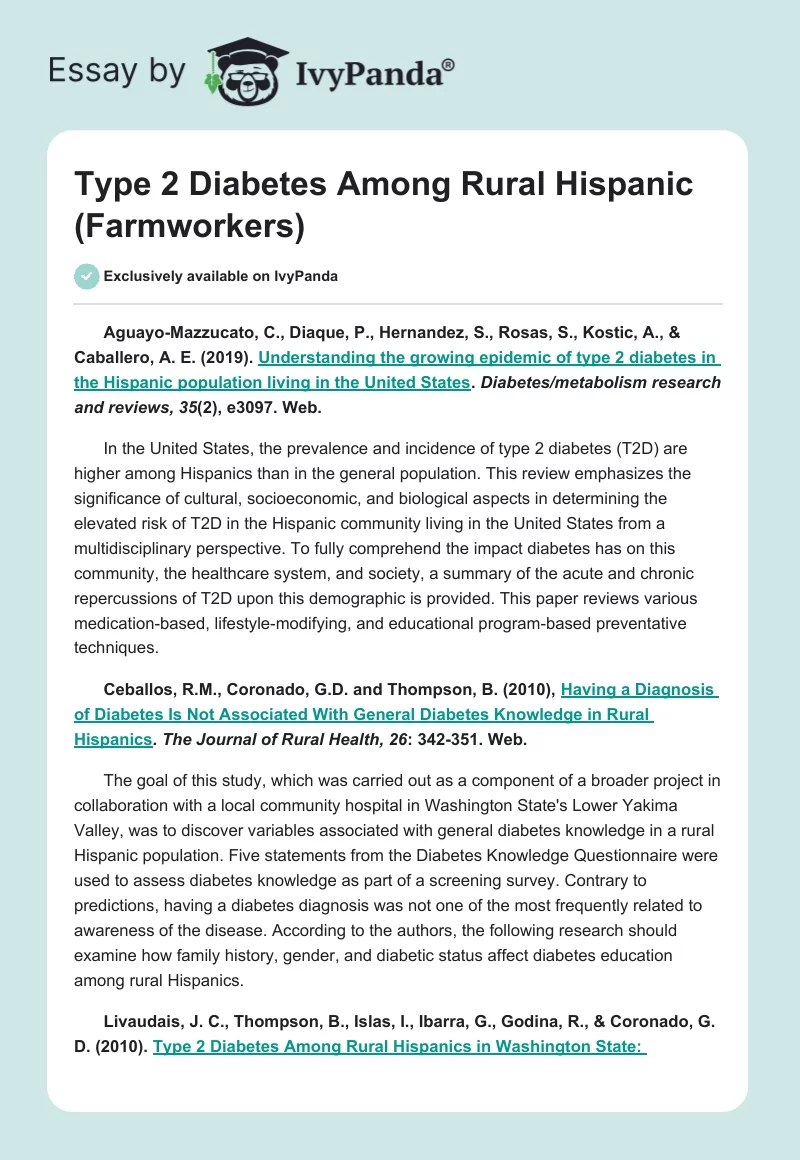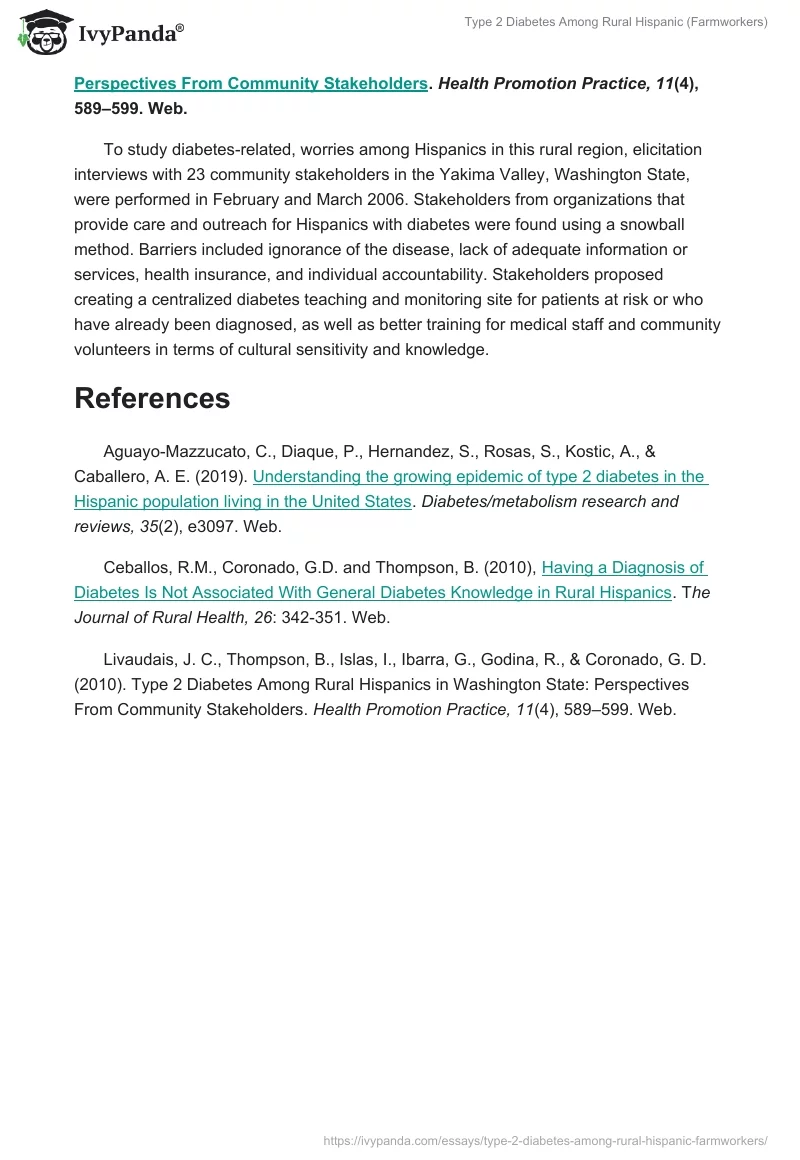Aguayo-Mazzucato, C., Diaque, P., Hernandez, S., Rosas, S., Kostic, A., & Caballero, A. E. (2019). Understanding the growing epidemic of type 2 diabetes in the Hispanic population living in the United States. Diabetes/metabolism research and reviews, 35(2), e3097. Web.
In the United States, the prevalence and incidence of type 2 diabetes (T2D) are higher among Hispanics than in the general population. This review emphasizes the significance of cultural, socioeconomic, and biological aspects in determining the elevated risk of T2D in the Hispanic community living in the United States from a multidisciplinary perspective. To fully comprehend the impact diabetes has on this community, the healthcare system, and society, a summary of the acute and chronic repercussions of T2D upon this demographic is provided. This paper reviews various medication-based, lifestyle-modifying, and educational program-based preventative techniques.
Ceballos, R.M., Coronado, G.D. and Thompson, B. (2010), Having a Diagnosis of Diabetes Is Not Associated With General Diabetes Knowledge in Rural Hispanics. The Journal of Rural Health, 26: 342-351. Web.
The goal of this study, which was carried out as a component of a broader project in collaboration with a local community hospital in Washington State’s Lower Yakima Valley, was to discover variables associated with general diabetes knowledge in a rural Hispanic population. Five statements from the Diabetes Knowledge Questionnaire were used to assess diabetes knowledge as part of a screening survey. Contrary to predictions, having a diabetes diagnosis was not one of the most frequently related to awareness of the disease. According to the authors, the following research should examine how family history, gender, and diabetic status affect diabetes education among rural Hispanics.
Livaudais, J. C., Thompson, B., Islas, I., Ibarra, G., Godina, R., & Coronado, G. D. (2010). Type 2 Diabetes Among Rural Hispanics in Washington State: Perspectives From Community Stakeholders. Health Promotion Practice, 11(4), 589–599. Web.
To study diabetes-related, worries among Hispanics in this rural region, elicitation interviews with 23 community stakeholders in the Yakima Valley, Washington State, were performed in February and March 2006. Stakeholders from organizations that provide care and outreach for Hispanics with diabetes were found using a snowball method. Barriers included ignorance of the disease, lack of adequate information or services, health insurance, and individual accountability. Stakeholders proposed creating a centralized diabetes teaching and monitoring site for patients at risk or who have already been diagnosed, as well as better training for medical staff and community volunteers in terms of cultural sensitivity and knowledge.


